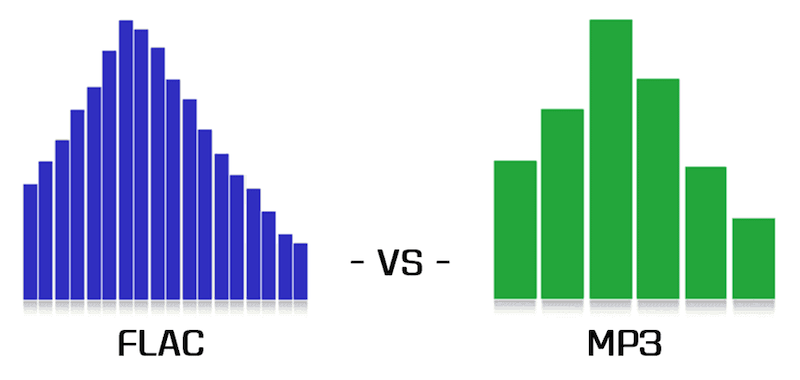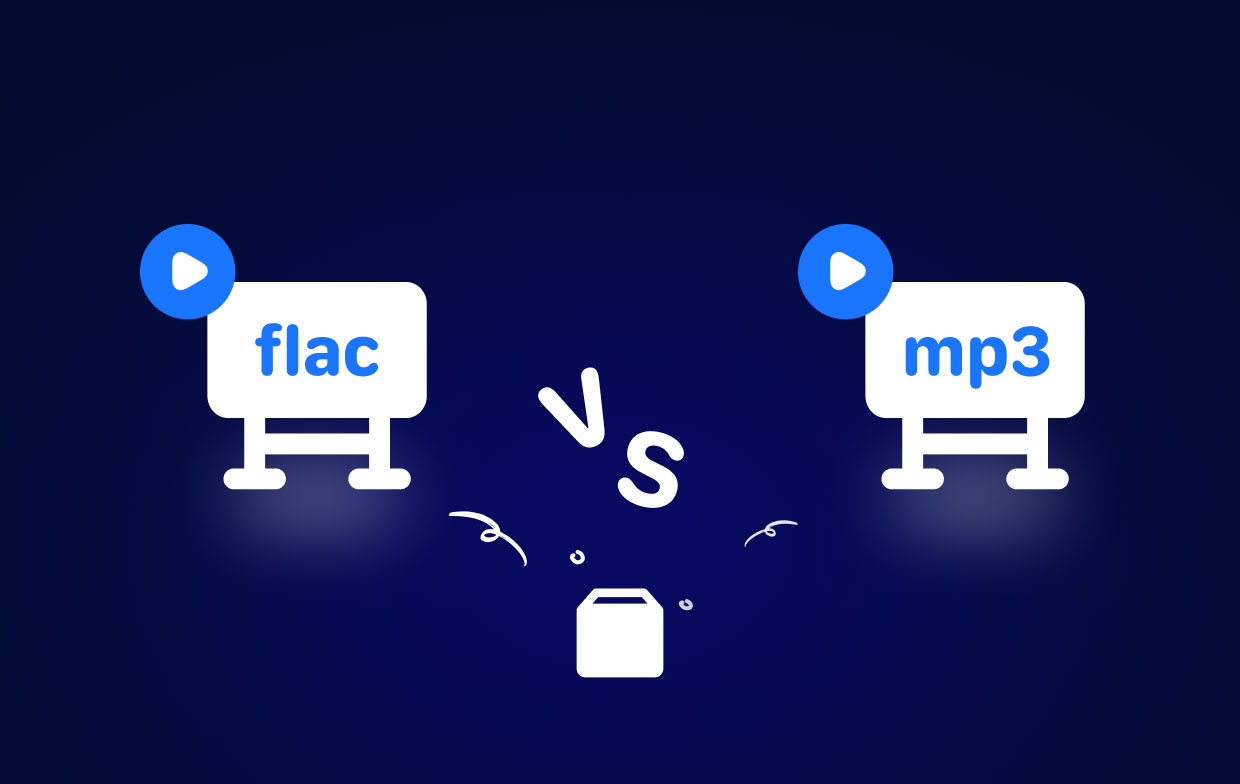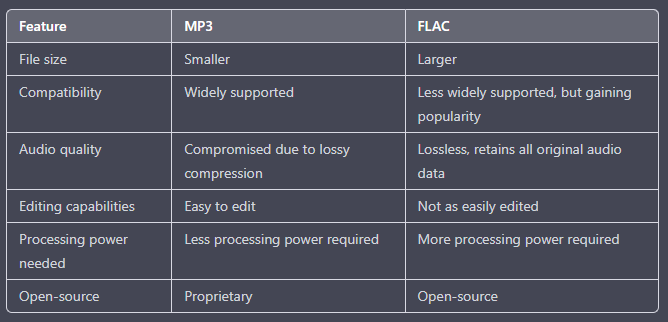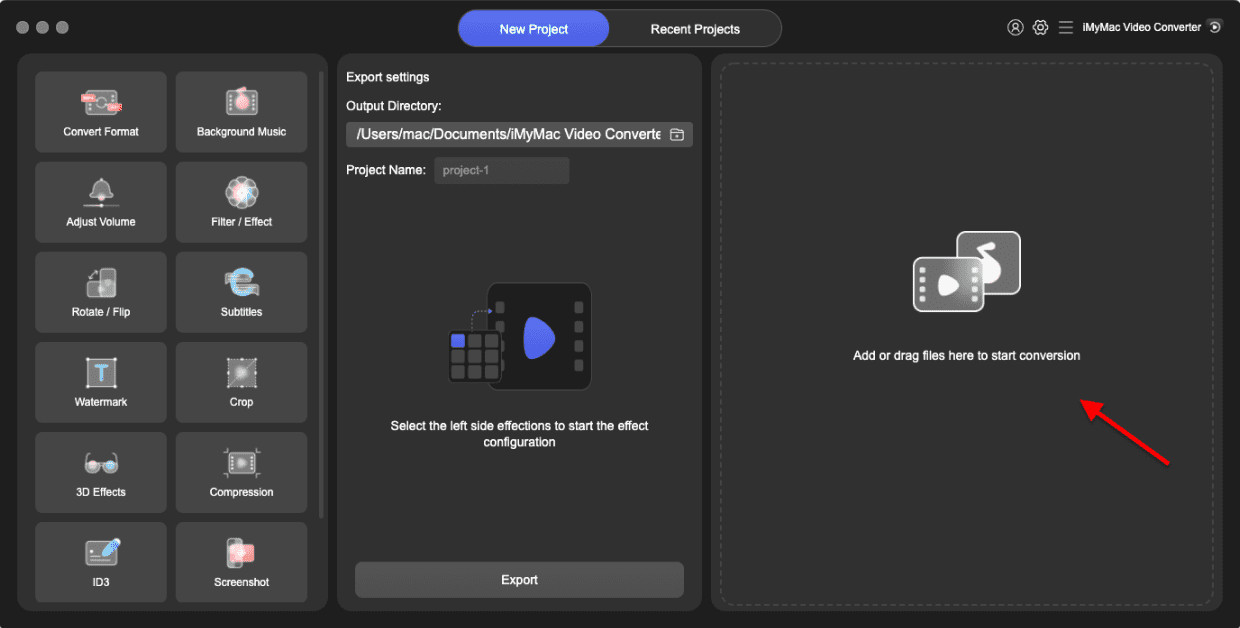In this guide, we will dive into the world of digital audio formats and explore the key differences between FLAC vs. MP3. As the two most popular audio formats, FLAC and MP3 have their own unique benefits and drawbacks, and choosing between them can be confusing for many people.
This guide will provide a detailed comparison between FLAC and MP3, covering everything from sound quality and file size to compatibility and processing power. By the end of this article, you will have a comprehensive understanding of these two audio formats and be equipped to make an informed decision about which one to use for your specific needs and preferences. If necessary, you can also use effective converters to choose any format you need.
Contents: Part 1. Is FLAC Better Than MP3?Part 2. How To Choose From FLAC Vs MP3?Part 3. Bonus Tips: How to Convert FLAC to MP3 or MP3 to FLAC?Part 4. Conclusion
Part 1. Is FLAC Better Than MP3?
The Free Lossless Audio Codec (FLAC) Format
FLAC (Free Lossless Audio Codec) is a popular digital audio format that provides lossless compression, meaning that no audio quality is lost during the compression process. This makes FLAC a great choice for audiophiles and other users who prioritize sound quality over file size.
FLAC vs. MP3, the former is used for a variety of purposes, including storing music collections, archiving audio recordings, and providing high-quality audio for live performances and recordings. Its lossless compression makes FLAC a popular choice for music lovers and audiophiles who want to enjoy their music without any compromise in sound quality.
However, there are a few situations where FLAC may not be the best choice. First, FLAC files are larger than lossy formats like MP3, which means that they take up more storage space and may be more difficult to play on portable devices. Second, FLAC is not as widely supported as MP3, which means that it may not be compatible with all media players and portable devices. Finally, FLAC requires more processing power to decode, which may be an issue for older computers or devices with limited processing power.

The MP3 Fomat
The MP3 file format is a popular digital audio format that was first introduced in the late 1990s. MP3 stands for MPEG-1 Audio Layer 3, and it uses a lossy compression algorithm to reduce the file size of digital audio files while retaining a reasonable amount of sound quality.
FLAC vs. MP3, MP3 quickly gained popularity due to its ability to store large amounts of music on portable devices and its widespread compatibility with a variety of devices, including computers, smartphones, and portable music players. Today, MP3 is one of the most widely used digital audio formats in the world and is supported by almost all modern media players and portable devices.
In terms of sound quality, MP3 provides a good balance between file size and audio quality, making it a good choice for many people. However, the lossy compression used by MP3 means that some of the original audio quality is lost during the compression process. This can result in a noticeable difference in sound quality when compared to lossless formats like FLAC.
MP3 is a versatile and widely used digital audio format that provides a good balance between file size and sound quality. Its widespread compatibility and ability to store large amounts of music on portable devices make it a popular choice for many people, but its lossy compression means that it may not be the best choice for audiophiles or others who prioritize sound quality.
FLAC Vs. MP3: Which One Should You Choose?
The choice between FLAC and MP3 ultimately depends on your specific needs and preferences. If sound quality is your top priority and you're willing to trade off file size for better audio quality, then FLAC is the better choice for you. FLAC provides lossless compression, meaning that no audio quality is lost during the compression process, making it the preferred format for audiophiles and other users who value sound quality over file size.
On the other hand, if file size and compatibility are more important to you, then MP3 may be a better choice. MP3 provides a good balance between file size and sound quality, making it a popular choice for many users. It is also more widely supported than FLAC, which means that it is compatible with a wider range of media players and portable devices.

Part 2. How To Choose From FLAC Vs MP3?
FLAC Pros And Cons
Pros:
- Open-source: FLAC vs. MP3, FLAC is an open-source format, meaning that it is freely accessible to anyone. This also means that it is not controlled by a single entity, making it a more democratic format.
- Uncompromised audio quality: FLAC uses lossless compression, meaning that the audio quality is not diminished during the compression process. This makes it ideal for audiophiles and users who value sound quality above all else.
- High-fidelity sound: FLAC preserves all the nuances and details of the original audio, making it the preferred format for music enthusiasts and audiophiles who want the best possible sound experience.
Cons:
- Limited editing options: FLAC's lack of editing capabilities makes it difficult to process or modify, and may require converting the file to another format.
- Limited compatibility: FLAC is not as widely supported as MP3, meaning it may not be compatible with all media players and portable devices.
- Larger file size: FLAC files are larger than lossy formats like MP3, taking up more storage space and potentially making them harder to store on portable devices.
- The processing power needed: Decoding FLAC requires more processing power, which may be an issue for older computers or devices with limited processing capabilities.

MP3 Pros And Cons
Pros:
- Smaller file size: FLAC vs. MP3, MP3 uses lossy compression, which reduces the size of the audio file, making it easier to store and transfer. This makes it an attractive option for users who are looking for a compact format.
- Wide compatibility: MP3 is widely supported by almost all media players, portable devices, and software, making it easier to play and share.
- Easy to edit: MP3 is a popular format for audio editing, making it easy to process, cut, or modify audio files without losing quality.
- Efficient use of resources: MP3 requires less processing power to decode, making it a more efficient format for older computers or devices with limited processing capabilities.
Cons:
- Compromised audio quality: MP3 uses lossy compression, which discards some of the original audio data, leading to a lower-quality output compared to lossless formats like FLAC.
- Lack of nuance and detail: MP3 may not preserve the same level of detail and nuance as lossless formats, making it less ideal for audiophiles and music enthusiasts who want the best possible sound experience.
- No open-source: MP3 is a proprietary format, meaning that it is not freely accessible to everyone. This may make it a less democratic format compared to open-source options like FLAC.
- Generation loss: Every time an MP3 file is re-encoded or converted, some audio quality is lost. Over time, repeated encoding and conversion can result in significant degradation of the audio quality. This means that MP3 files may not be the best choice for archiving your music collection, as the audio quality may deteriorate over time.
Part 3. Bonus Tips: How to Convert FLAC to MP3 or MP3 to FLAC?
iMyMac Video Converter is a reliable and efficient software designed for converting various audio and video files into different formats. It enables the conversion of FLAC vs. MP3 files, as well as other popular audio formats, making it a versatile tool for your audio needs.
With a straightforward interface and easy-to-use features, even those with limited technical knowledge can take advantage of this software. The ability to switch between FLAC and MP3 formats allows you to choose between higher audio quality or smaller file sizes, depending on your preferences. iMyMac Video Converter is a perfect choice for professionals and non-professionals alike who want to enjoy high-quality music.

Part 4. Conclusion
In conclusion, FLAC vs. MP3 are both popular audio formats with their own unique strengths and weaknesses. FLAC is a lossless format that offers excellent audio quality, but its larger file size can be an issue. MP3, on the other hand, is a lossy format that offers smaller file sizes but sacrifices some audio quality in the process.
The choice between FLAC and MP3 ultimately comes down to your personal preferences and needs. If you're looking for the highest audio quality, FLAC may be the better choice. But if you're looking for smaller file sizes and compatibility with a wider range of devices, MP3 may be a better option.
With the help of tools like iMyMac Video Converter, you can easily switch between FLAC vs. MP3 formats as needed, even if you want to turn FLAC into AC3, it can easily do it for you, allowing you to flexibly make full use of audio files.
The software is user-friendly, with a straightforward interface and easy-to-use features, and is an excellent tool for anyone looking to manage and convert their audio files, whether they're professionals or just casual music lovers.



